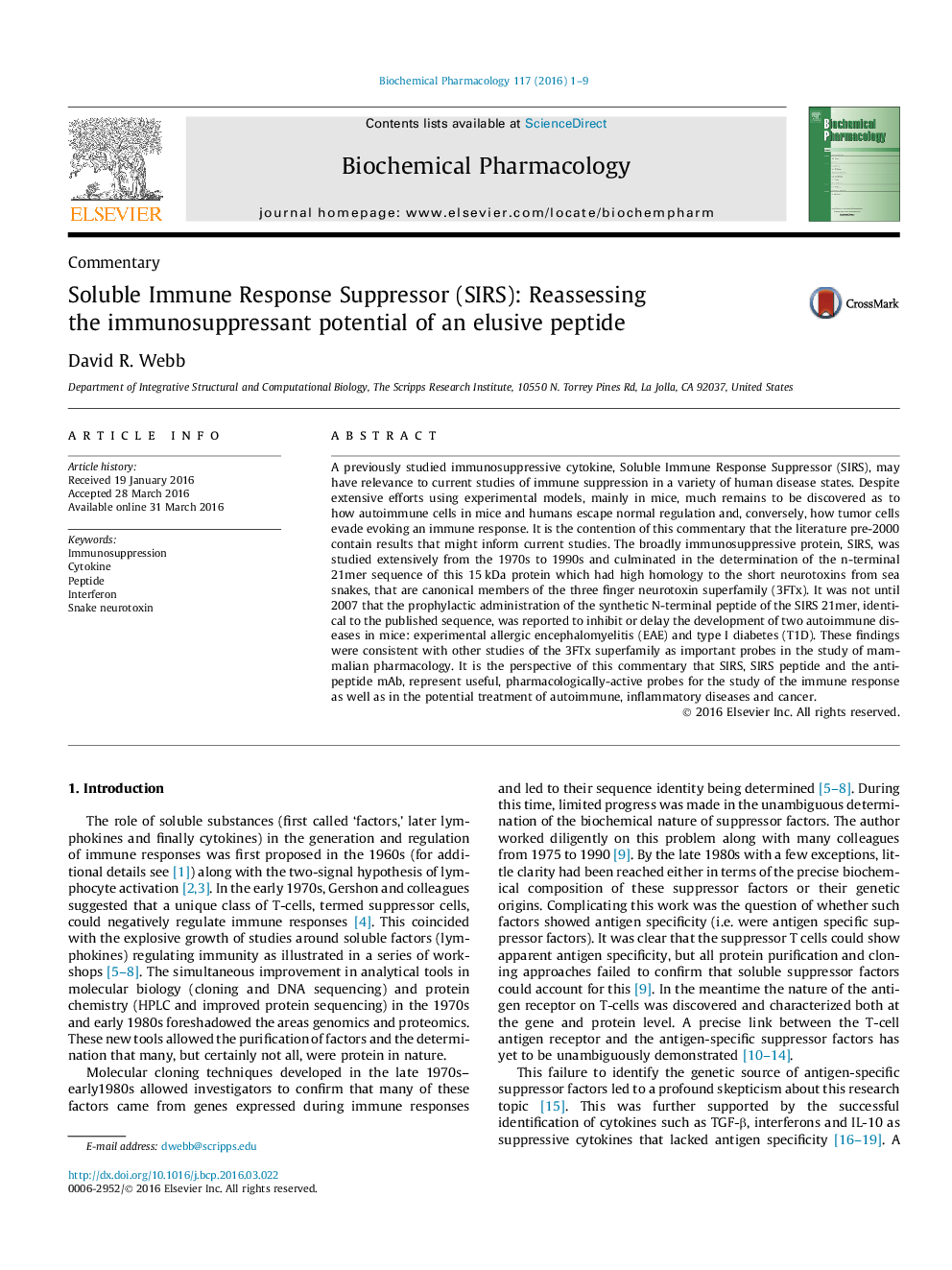| Article ID | Journal | Published Year | Pages | File Type |
|---|---|---|---|---|
| 5552398 | Biochemical Pharmacology | 2016 | 9 Pages |
A previously studied immunosuppressive cytokine, Soluble Immune Response Suppressor (SIRS), may have relevance to current studies of immune suppression in a variety of human disease states. Despite extensive efforts using experimental models, mainly in mice, much remains to be discovered as to how autoimmune cells in mice and humans escape normal regulation and, conversely, how tumor cells evade evoking an immune response. It is the contention of this commentary that the literature pre-2000 contain results that might inform current studies. The broadly immunosuppressive protein, SIRS, was studied extensively from the 1970s to 1990s and culminated in the determination of the n-terminal 21mer sequence of this 15Â kDa protein which had high homology to the short neurotoxins from sea snakes, that are canonical members of the three finger neurotoxin superfamily (3FTx). It was not until 2007 that the prophylactic administration of the synthetic N-terminal peptide of the SIRS 21mer, identical to the published sequence, was reported to inhibit or delay the development of two autoimmune diseases in mice: experimental allergic encephalomyelitis (EAE) and type I diabetes (T1D). These findings were consistent with other studies of the 3FTx superfamily as important probes in the study of mammalian pharmacology. It is the perspective of this commentary that SIRS, SIRS peptide and the anti-peptide mAb, represent useful, pharmacologically-active probes for the study of the immune response as well as in the potential treatment of autoimmune, inflammatory diseases and cancer.
Graphical abstractSIRS may be induced by interferon, antigens or mitogens and block cytokine production. A similar effect may be obtained using a 21 amino acid SIRS peptide.Download full-size image
